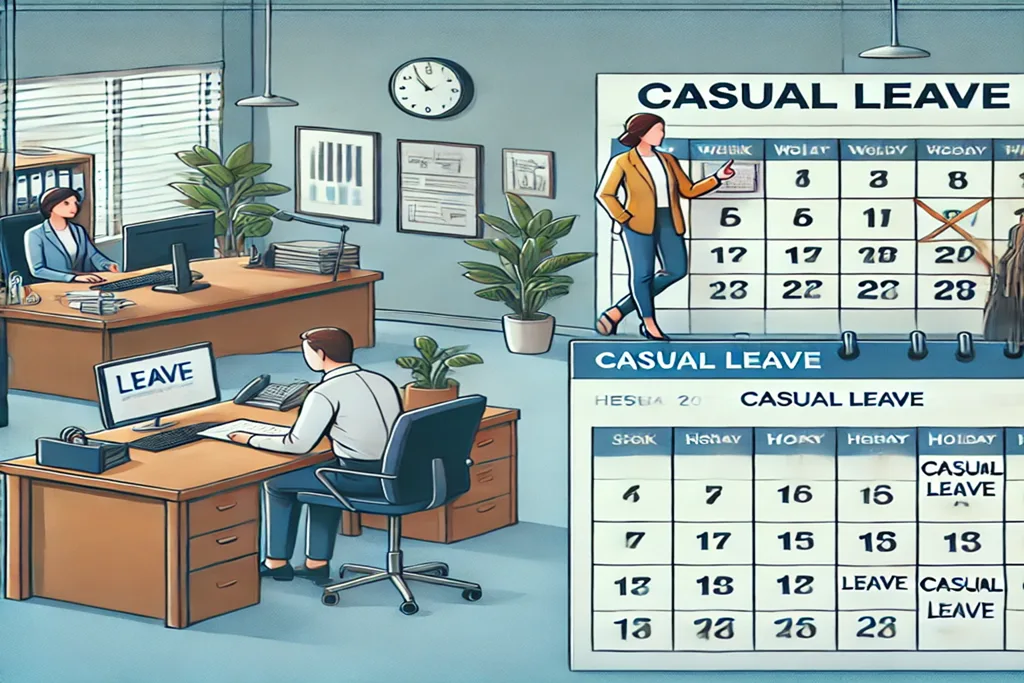
Understanding Casual Leave Rules for Central Government Servants
Casual leave is an important provision for Central Government servants, allowing them to take short breaks from work without affecting their pay or continuity of service. However, casual leave is governed by specific rules and conditions that aim to ensure fair and consistent application across government offices. This blog post outlines the key “casual leave rules” that every government employee should be aware of.
What is Casual Leave?
Casual leave is not considered a formal type of leave under government regulations. When a government servant takes casual leave, they are not considered absent from duty, and their pay is not interrupted. However, casual leave should not be used to bypass other leave rules or extend regular leave beyond its permissible period. It must be used responsibly to avoid any administrative complications.
Casual Leave Entitlement
Under the Casual Leave Rules, the maximum number of days granted to central government staff is 08 days per calendar year. However, there are some variations depending on the type of work or office. For instance:
- Maximum casual leave: 08 days annually,
Combining Casual Leave with Other Leave
Casual leave can be combined with special casual leave, but not with regular leave and special casual leave simultaneously. Additionally, casual leave cannot be combined with joining time (the time granted when an employee joins a new post or transfers).
It’s also important to note that half-day casual leave is allowed. This is determined by the lunch interval, meaning that employees can take a half-day leave before or after lunch, depending on their schedule.
Casual Leave on Specific Occasions
The Casual Leave Rules also allow for flexibility in certain situations:
- Leave during a tour: Government servants can take casual leave while on official tours.
- Proportional casual leave: Employees who join the government mid-year can avail of casual leave in proportion to the months they’ve served.
- Combination with public holidays: Sundays and closed holidays can be either prefixed or suffixed to casual leave, without counting them as part of the leave period. Similarly, restricted holidays can also be attached to casual leave.
Late Attendance and Casual Leave
Casual leave is sometimes used in cases of late attendance. If an employee arrives late, and the delay is unavoidable, half-day casual leave may be debited from their account. However, the competent authority can condone late attendance on not more than two occasions per month. Similarly, if a government servant leaves early without permission, half a day’s casual leave is debited from their account.
If a government servant has no casual leave left and arrives late or leaves early without permission, the authority can treat it as unauthorized absence. The employee is informed that they may either face the consequences of their actions or apply for earned leave or another form of leave.
Record Keeping
To manage casual leave effectively, a casual leave register must be maintained. This register helps track the casual leave availed by each employee, and entries should be made with appropriate indications and the sanctioning officer’s initials.
Conclusion
The casual leave rules ensure that employees are provided with reasonable time off without affecting their pay or work obligations. By following the guidelines set out in the rules, government employees can maintain a balanced approach to taking leave while complying with the regulations. Always remember to follow these rules diligently, whether you’re taking leave for personal reasons or just needing a short break from work.
For more detailed guidelines, employees should refer to the respective Office Memorandums (OMs) or consult their HR departments for clarification.
Also read this
Complete Guide to Rule 38 Transfer Rules: Eligibility, Conditions, and Exceptions
Joining Time Rules: Understanding Rules, 1979


All Civil Servants should get 2 leaves in a month in case of emergency like Damnrasoi policy.